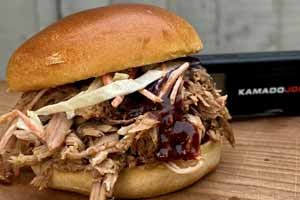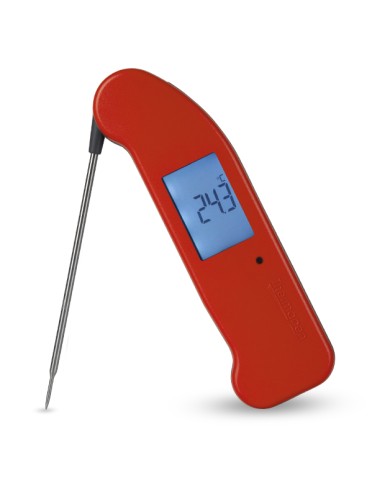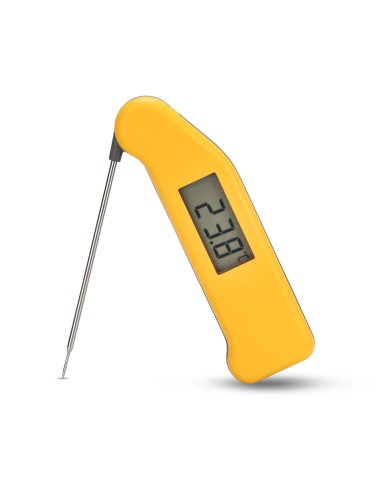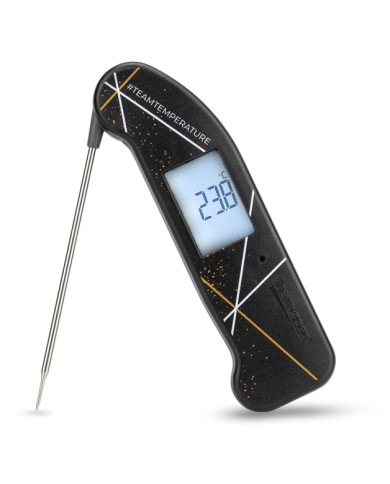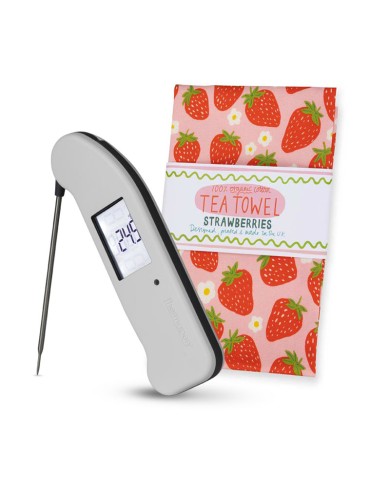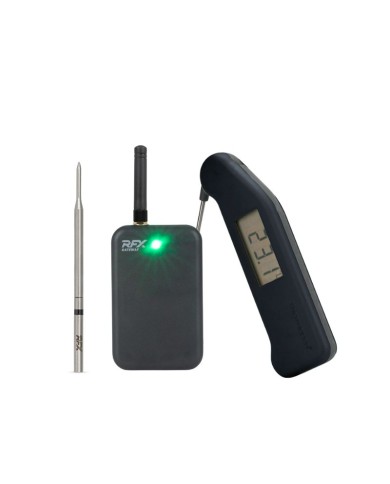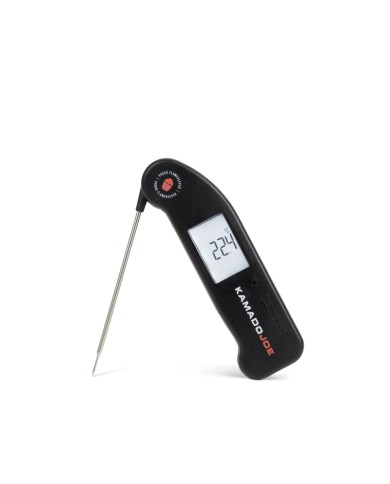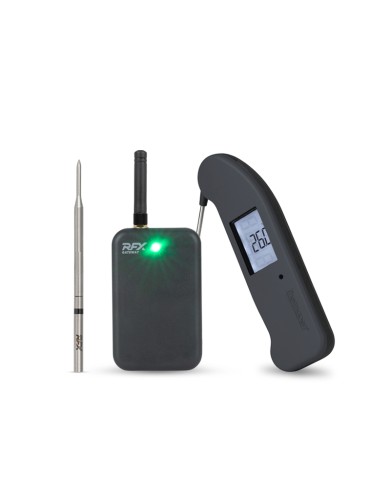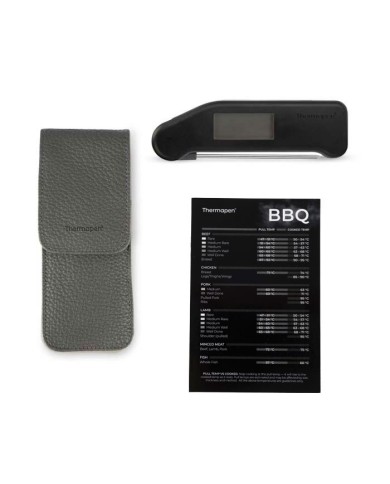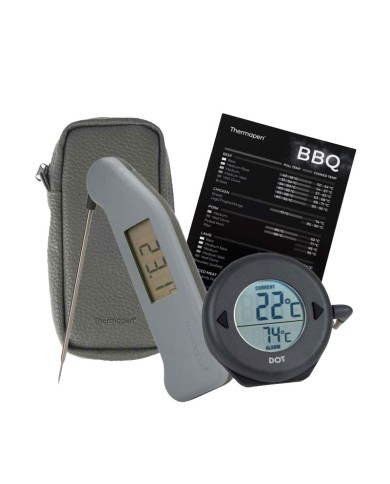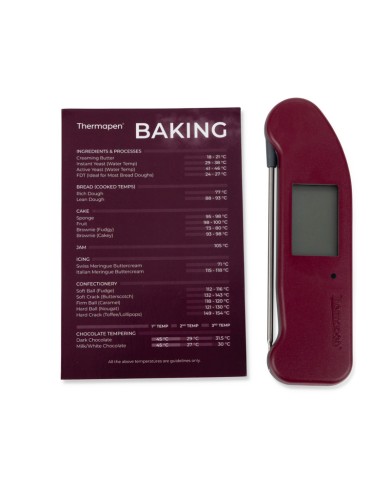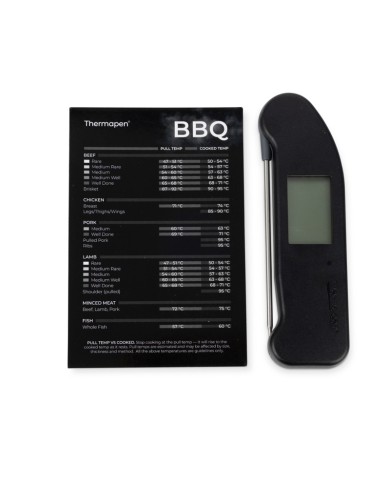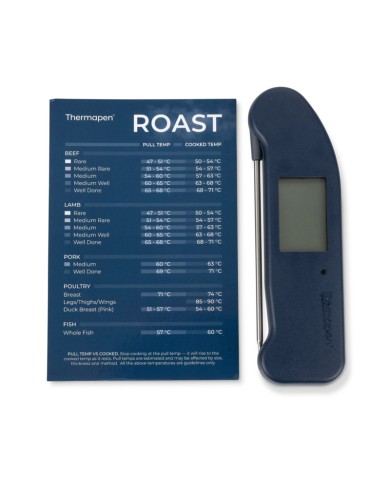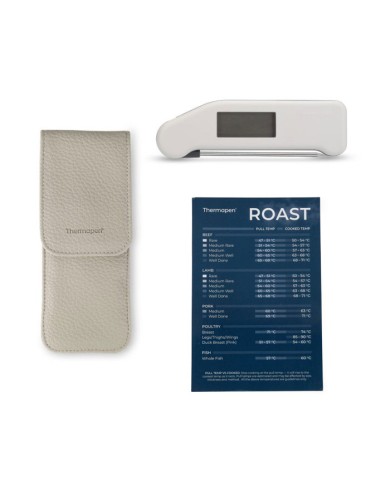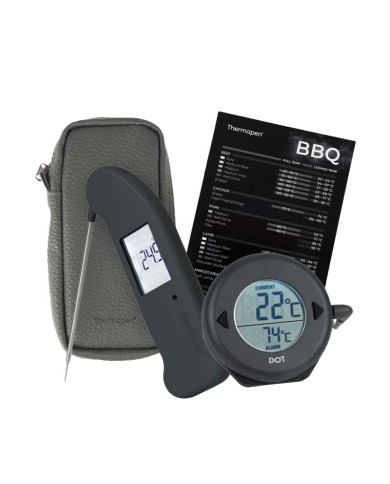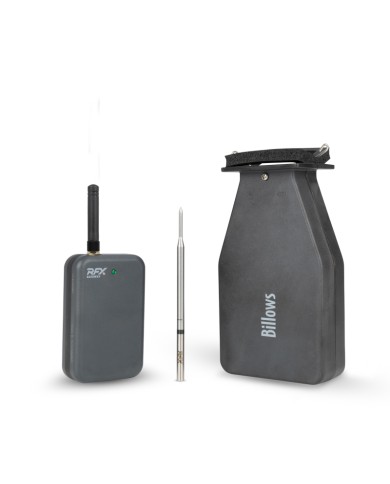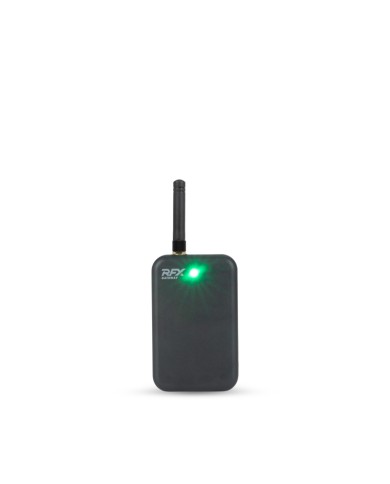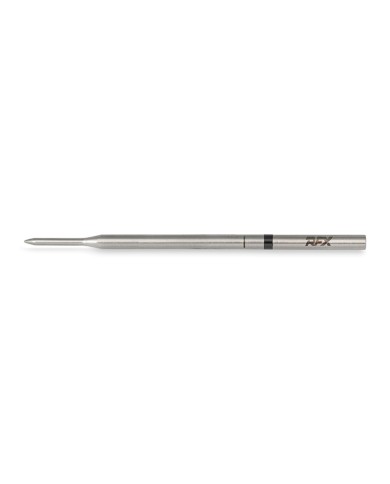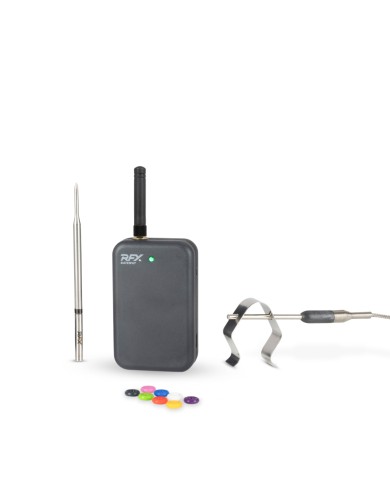Easy, tender BBQ pulled pork, loaded into buns with coleslaw and BBQ sauce.
Why Meat Keeps Cooking as It Rests (And What to Do About It)
Have you ever removed your meat from the heat at the perfect temperature, only to find it looks overdone once you slice into it? The reason for this is carryover cooking, a process that means food continues rising in temperature, even after it’s off the heat.
In this blog, we’ll take a look at why this happens, what you need to know, and how to apply this knowledge to ensure perfect results every time.
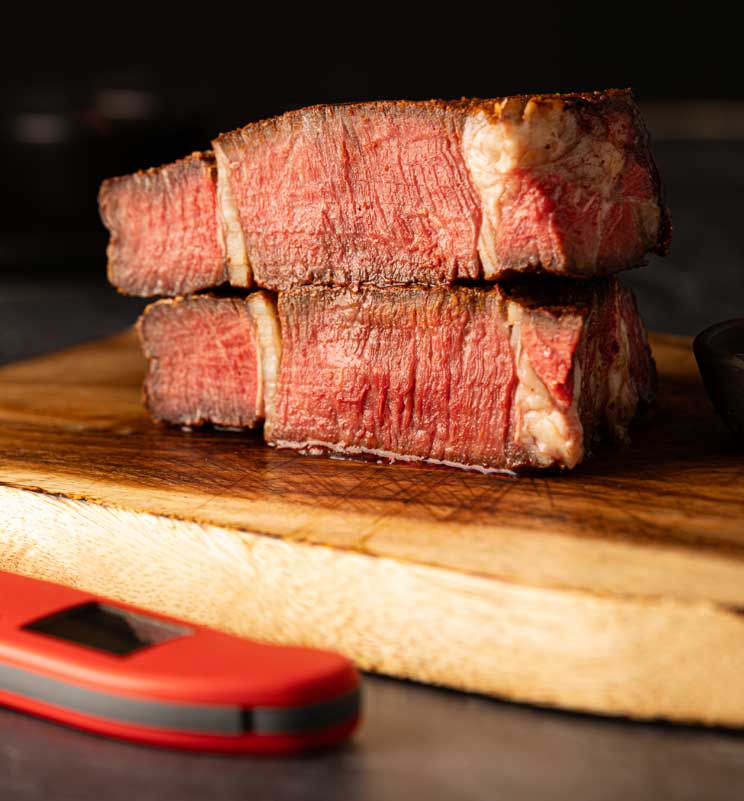
What is Carryover Cooking, and Why Does it Happen?
When one thing is hotter than another, it will pass the heat on until they settle on a similar temperature.
For example, when you hold a mug of hot tea in cold hands, the heat redistributes. The hot tea warms your mug, which in turn warms your hands. This happens rapidly at first, but as your hands and the tea reach a similar temperature, it slows down, before stopping altogether.
Cooking is the same: heat passes from the source (your oven, grill or pan) to the outer layers of the meat, and each layer of meat passes the heat towards the centre, raising the internal temperature.
However, when you remove your meat from the oven, it’s not finished. The outer layers are still hotter than the inside, which means they’ll continue to pass on heat and increase the internal temperature until the meat is more evenly cooked. At the same time, because the air temperature around the meat is cooler, some of the heat will also transfer into the air.
The heat that remains after cooking is called residual heat. The process of the heat redistributing is called carryover cooking. Knowing about this is essential for cooking meat perfectly. It’ll stop chicken drying out, lamb roasts surpassing perfectly pink, and rare steaks drifting into medium territory.
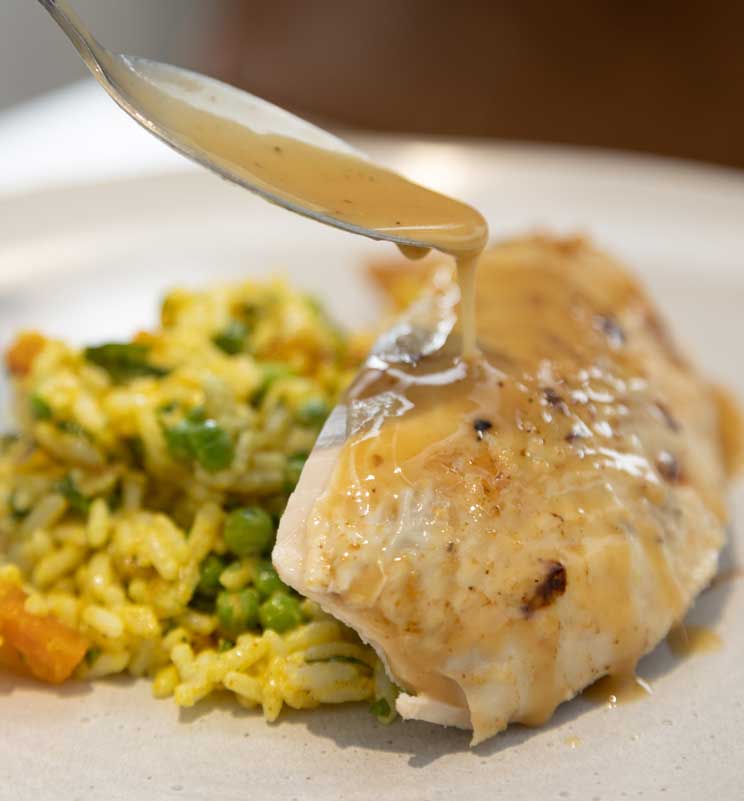
What Should You Do About It?
You can’t stop meat from carryover cooking. If you’re thinking about skipping the resting process to prevent it—don’t. Resting is a crucial part of the cooking process, resulting in more tender, juicy and flavoursome meat.
The only thing you can do is make sure you pull your meat off the heat a little early to account for the difference, so while it rests, it hits your target temperature.
But remember: it’s not done resting as soon as it reaches your target, it actually needs to start dropping a few degrees. The temperature drop is the part where all the juiciness and tenderness happen, so you should keep checking the internal temperature until you’ve seen it reach its peak and start to drop a little.
Does All Meat Carryover Cook the Same Amount?
Unfortunately not, which can make removing your meat from the heat at the right time a little more difficult.
There are three primary factors which affect the amount that meat will carryover cook:
Shape
Flat foods experience less carryover cooking than round foods because they have more surface area to vent heat outwards. Round foods have less surface area, meaning more heat gets trapped inside. So, the rounder the food, the earlier you should stop cooking it.
Size
Bigger foods hold more heat and have a smaller surface area in relation to their volume, meaning more heat travels inwards. The bigger the food, the more carryover cooking will occur. Our experiment on resting lamb legs showed they can rise up to 14°C!
Cooking Temperature
Cooking food at a lower temperature, like low and slow dishes, means there is a smaller temperature gradient throughout the food, resulting in less carryover cooking. Whereas cooking on a high heat, like searing, means the outside of the food is much hotter than the inside, and more carryover cooking will occur.
A Rough Guide to Different Meats
As we’ve explained, the shape, size and cooking method all impact the amount of carryover cooking to expect, and once you start monitoring your meat as it rests, you’ll get a better idea of how much they increase.
But to get you started, we’ve put together a rough idea of what you can expect, plus how long you’ll need to rest them for to ensure the full rise and drop takes place.
| Meat | Carryover Cooking | Resting Time |
| Small Steaks, Lamb Chops, Pork Chops | 5-7 °C | 5-10 minutes |
| Beef, Lamb or Pork Roasts | 10-12 °C | 30-60 minutes |
| Chicken Breasts | 4-6 °C | 5-10 minutes |
| Whole Chickens & Turkeys | 6-8 °C | 30-90 minutes |
The carryover cooking temperatures listed above are general guidelines. The actual temperature rise can vary slightly depending on the size, shape, and thickness of the meat. It’s always a good idea to monitor the temperature closely with a reliable thermometer like the Thermapen, and adjust your pull times based on how the meat is resting.
Best Tools for the Job
There are two main types of tools you can use to ensure you cook and rest your meat to the perfect temperatures.
Instant-Read Meat Thermometer
You can’t go wrong with a trusty instant-read thermometer. Simply probe your meat intermittently to see the internal temperature during cooking and as it rests. We recommend the fast and accurate Thermapen ONE to give you reliable readings every time.
Leave-In Meat Thermometer
Don’t want to keep checking back? A smart thermometer like RFX or a smart thermometer like the DOT stays inside your meat as it cooks and rests, continually showing you the internal temperature on your phone/tablet or on its display. You can also set alarms so you can get alerted once it reaches your pull, target, and final resting temperatures.
The Takeaway
Meat hasn’t finished cooking once you remove it from the oven, grill or pan. As it rests, heat continues to move from the outer layers inwards, increasing the core temperature.
To prevent meat from overcooking and ensure the best results, it’s key to monitor three temperatures:
Pull Temperature
The temperature you want to remove your meat from the heat (around 4-12 °C ahead of your target temperature, depending on the cut). Use our chart as a rough guide.
Target Temperature
The final peak temperature you want the meat to reach as it rests.
Final Resting Temperature
A few degrees below your target temperature. Once it has reached its peak and started to drop, it’s ready to serve.
Easy! Residual cooking conquered in three simple steps. Want to know the best methods for resting your meat, such as whether it’s best to do it covered or uncovered? Check out our ultimate guide.
Related products
Thermapen® ONE Thermometer
Thermapen® Classic Thermometer
Team Temperature Thermapen® ONE
Thermapen® ONE Limited Edition Colours
Thermapen x Laura Barnes – Sweet Strawberries Bundle
RFX Thermapen Classic Kit
Kamado Joe® Thermapen ONE
Polka Dot Thermapen® ONE
RFX Thermapen ONE Kit
Black Thermapen® Classic Set
Grey Thermapen® Classic with DOT
Thermapen® Cherry Baking Duo
Thermapen® Black BBQ Duo
Thermapen® Midnight Blue Roasting Duo
White Thermapen® Classic Set
Charcoal Thermapen® ONE Set with DOT
RFX Gateway
RFX Meat
RFX Starter Kit with 1-4 Probes
Related posts
 How to Cook Christmas Turkey on a BBQ
How to Cook Christmas Turkey on a BBQ
 5 Best Cooking Christmas Gifts 2025
5 Best Cooking Christmas Gifts 2025
 Mike Tomkins' Ultimate Beef Wellington
Mike Tomkins' Ultimate Beef Wellington
 Christmas Marmalade Glazed Gammon
Christmas Marmalade Glazed Gammon
 How Long to Rest a Turkey
How Long to Rest a Turkey
Search
Categories
- Baking (35)
- BBQ (85)
- Autumn (14)
- Cheap Eats (9)
- Sweet Treats (38)
- Tips, Advice & Info (78)
- Christmas (36)
- Drinks (2)
- Thermapen Father's Day Recipes (18)
- Team Temperature (28)
- Date Night (37)
- Celebrations (20)
- Family & Kids (10)
- Fish (21)
- Low & Slow (13)
- Meat (142) click
-
Chefs (132)
click
- Kenny Tutt (16)
- Richard Holden (16)
- Barbechoo (7)
- Only Slaggin (1)
- SoSaSe Chocolat (1)
- Genevieve Taylor (5)
- Becky Excell (2)
- Charlotte Stirling-Reed (3)
- The Smokin Elk (13)
- Marcus Bawdon (2)
- Thermapen Chef (25)
- Edd Kimber (2)
- Humble Plates (7)
- Simon May (4)
- The Hedgecombers (3)
- Billy & Jack (4)
- Perfectly Preserved (3)
- Mike Tomkins (20)
- DJ BBQ (2)
- Nick Nairn (4)
- BBQ Jake (1)
- Air Fryer (9)
- RFX (6)
Latest recipes
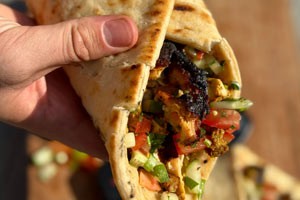
Rotisserie-cooked chicken shawarma, coated in a punchy yoghurt marinade. Pile into flatbreads with salad
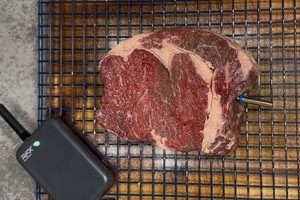
Ribeye is an amazing, flavour-packed cut of beef. Learn how to cook ribeye steak medium rare using the reverse sear...
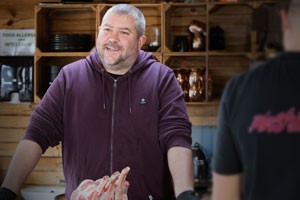
Elky Whittaker, aka The Smokin’ Elk, began barbecuing as a hobby 10 years ago. Today, he has 262k Instagram followers...
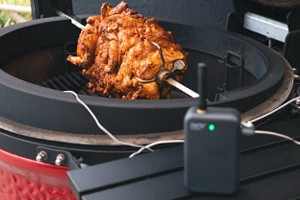
Juicy BBQ chicken shawarma recipe with homemade flatbreads and garlic sauce.
Archive
Popular Recipes
